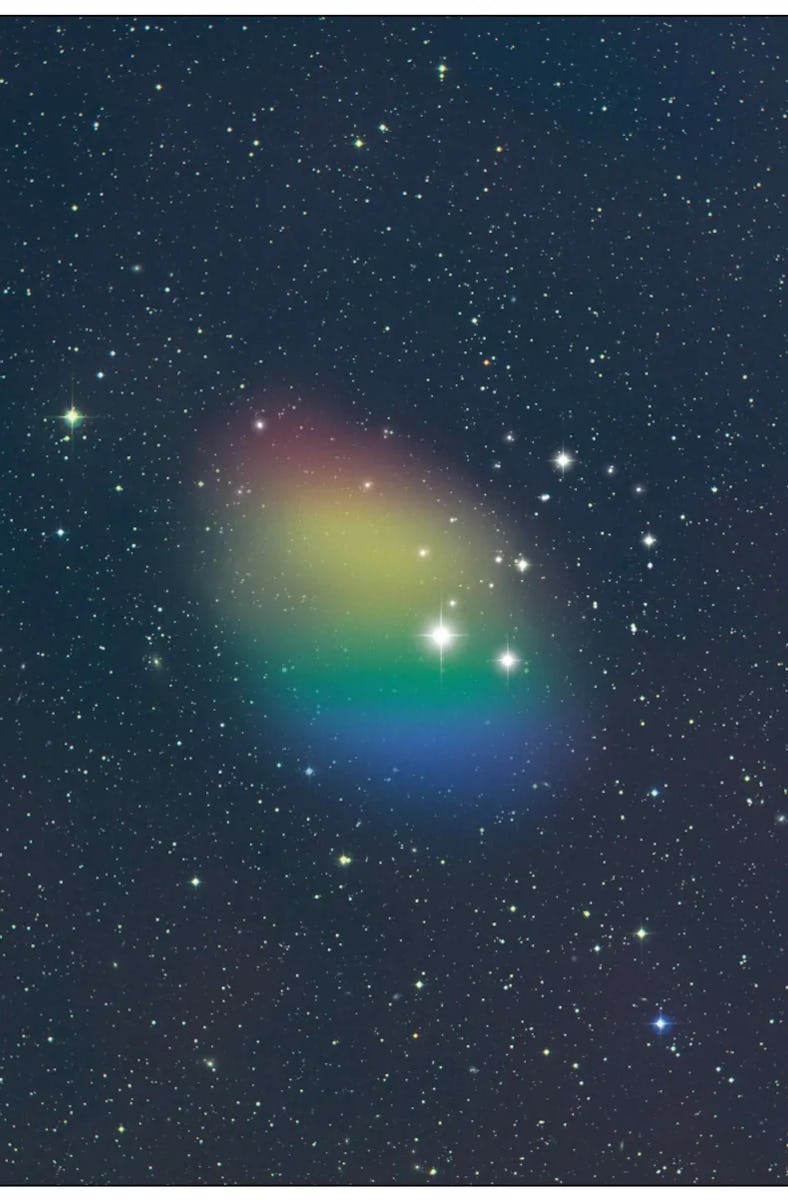Astronomers Accidentally Stumble Upon An ‘Invisible’ Galaxy
Sometimes, making great astronomical discoveries requires a “happy little accident.”

In the vast expanse of the universe, “invisible” galaxies lurk everywhere — and astronomers just discovered one by complete accident.
When West Virginia’s Green Bank Observatory (GBT) peered at incorrect coordinates during a recent international, multi-telescope search for the neutral hydrogen gas of galaxies fainter than the night sky (called low surface brightness galaxies), the results showed puzzling data. After close inspection, it turned out that GBT had stumbled upon an object, known not-so-memorably as J0613+52, that no telescope had yet recorded. This celestial object remained so well hidden because it has no discernible starlight. But what it lacks in stars, it more than makes up for with swirling gas.
The Green Bank Telescope adjusting its position.
Every star needs gravity to form, but sometimes gravity isn’t enough. Instead, the gaseous stellar material that would form stars opts to just swirl about like a massive soup — too thinned out to coalesce into a visible, starlight-filled galaxy. Isolated from any other galaxy that could possibly manipulate its gas with gravity, J0613+52 could very well be the first nearby primordial galaxy ever discovered.
Glimpsing the invisible
As the great PBS painter Bob Ross once put it “We don’t make mistakes, just happy little accidents,” and this cosmic slip-up likely has GBT astronomers grinning.
“We found a real discrepancy between some results from the Green Bank Telescope and the Nançay Radio Telescope for one particular object. And upon looking a little bit closer at it — and spending far too much time — we discovered that we had actually mistyped the coordinates in the GBT catalog,” Karen O’Neil, senior scientist and former director of the Green Bank Observatory, said on Monday at the 243rd Meeting of the American Astronomical Society in New Orleans. “So we went back and said, ‘alright well, what did we detect?’’’
They found a concentration of hydrogen gas, but no known low surface brightness galaxy was anywhere near this place. Instead, they’d found something new as radio data suggested that material was abundant and organized like a spiral galaxy.
An artist’s depiction of galaxy J0613+52. The colors indicate the likely rotation of the hydrogen gas that the Green Bank Observatory detected. Red is away, relative to the observer, while blue is towards the observer.
All the stuff growing on Earth, all the alien planets we haven’t yet discovered, and all the funky supernova found throughout the universe would never exist without gas collapsing into stars. While stars are quintessential to the universe, they can’t manifest without the right dynamics.
O’Neil theorizes that J0613+52 is a galaxy-sized object so incredibly thinned out, or diffuse, that stars can’t form. Exacerbating its dim existence is its lonely place in space, absent of nearby galaxies that might help it make stars by sweeping past and then triggering starbursts.
The rainbow-colored smudge seen at the center of a new Green Bank image is the enigmatic J0613+52. While the colors are artificial, image processors added them to show where radio data suggests material moves away (red) and where it moves towards the viewer (blue). The color and their corresponding motions highlight what makes this place so weird. “What really sticks out about this galaxy is the fact that it is essentially a normal spiral,” O’Neil said, due to its mass and dynamical rotational speed.
This might be the first nearby primordial galaxy, a classic prototype that was perhaps more common in the early cosmos. In other words, there’s nothing quite like J0613+52 in the modern universe, and astronomers will perform more sensitive full-sky surveys to learn more about its no-longer-invisible story.